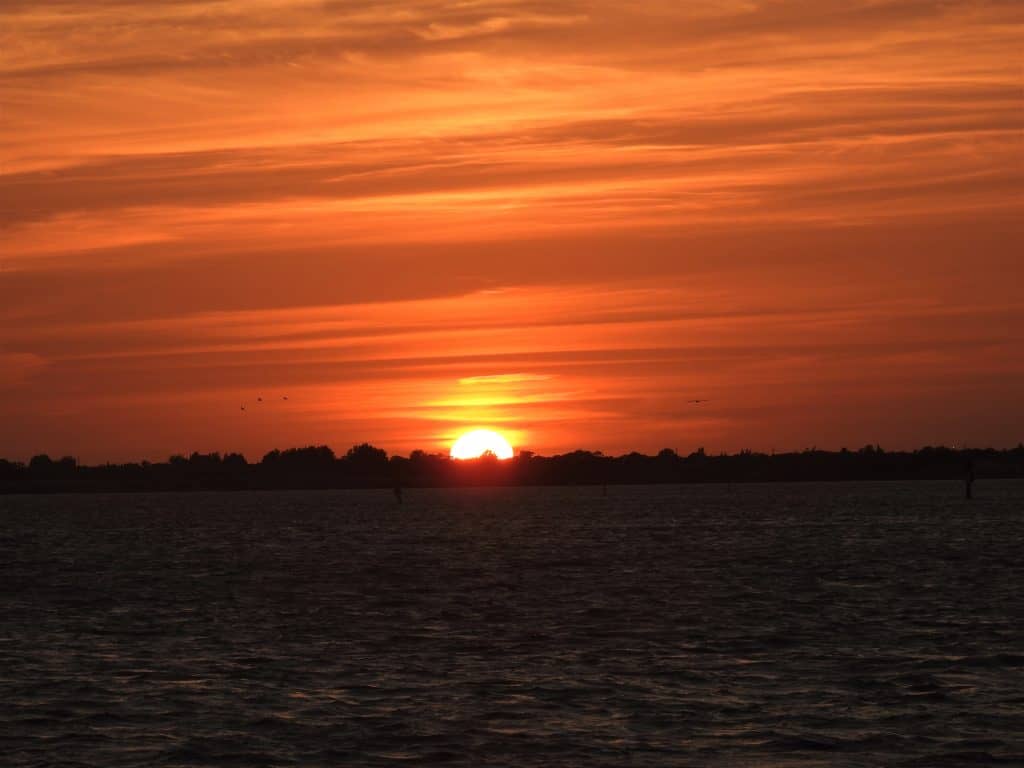Paradise was founded in 1971 when Sebastian Inlet State Park was established. This park is located between Melbourne Beach and Vero Beach on Florida’s Atlantic Coast. It spans approximately 1,000 acres and lies on both sides of the Sebastian Inlet, making it a visual gem to behold.
The unspoiled, panoramic views of Sebastian Inlet welcome you. It’s a fisherman’s oasis, a birder’s sanctuary and a nature lover’s outdoor amphitheater. So, what are you waiting for – let’s go!
An Abundance of Boating and Fishing Awaits
Upon entering the park, the vast inlet of stunning blue water surrounds you. The twin jetties host many an angler delighting in the abundance of fish that flourish here.
If towing a boat, a launch is offered at the Indian River Lagoon, south of the campground or the Bayside Marina at the inlet’s north side. It’ll take you no time at all to make your way through the lagoon to the jetties and into the Gulf Stream, located 25 miles east of the inlet, should you wish to explore.
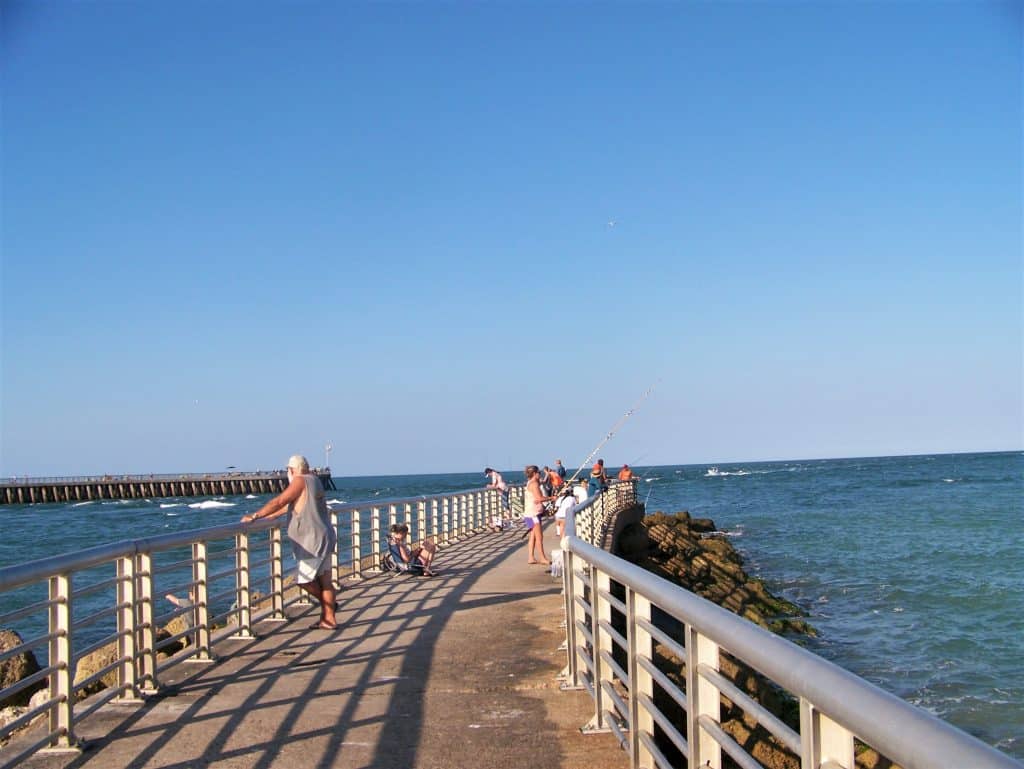
Some of the fish you may be feasting on later include snook, redfish, bluefish and Spanish mackerel. Saltwater fish are here for the taking with a good cast and the right bait.
The bridge and catwalks are ADA accessible. Call 1-888-FISH-FLORIDA for more information or go to https://myfwc.com/fishing/, as a saltwater license is required for anglers. For your convenience, a bait and tackle shop is located at Bayside Marina. Fishing is permitted off the dock, the catwalks, a large beachside pier or under the A1A bridge.
For the Birders
With the state park having beach and lagoon frontage, bird habitat ranges from coastal strands to maritime hammocks to mangroves. It’s an oasis for spotting a multitude of birds. Aside from pelicans, herons and terns, birders can watch for Black Skimmers, Herring Gulls, Ruddy Turnstones or even the Common Loon during fall and winter.
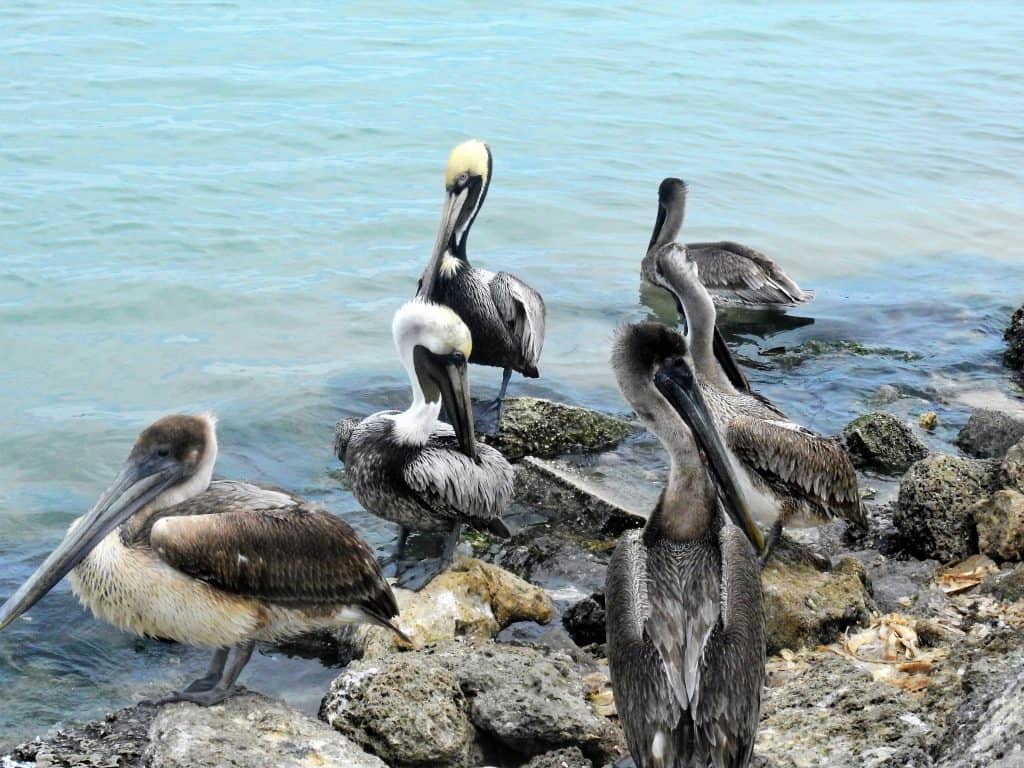
Be sure to grab a bird list and map at the entrance station located on the northwest side of the inlet bridge.
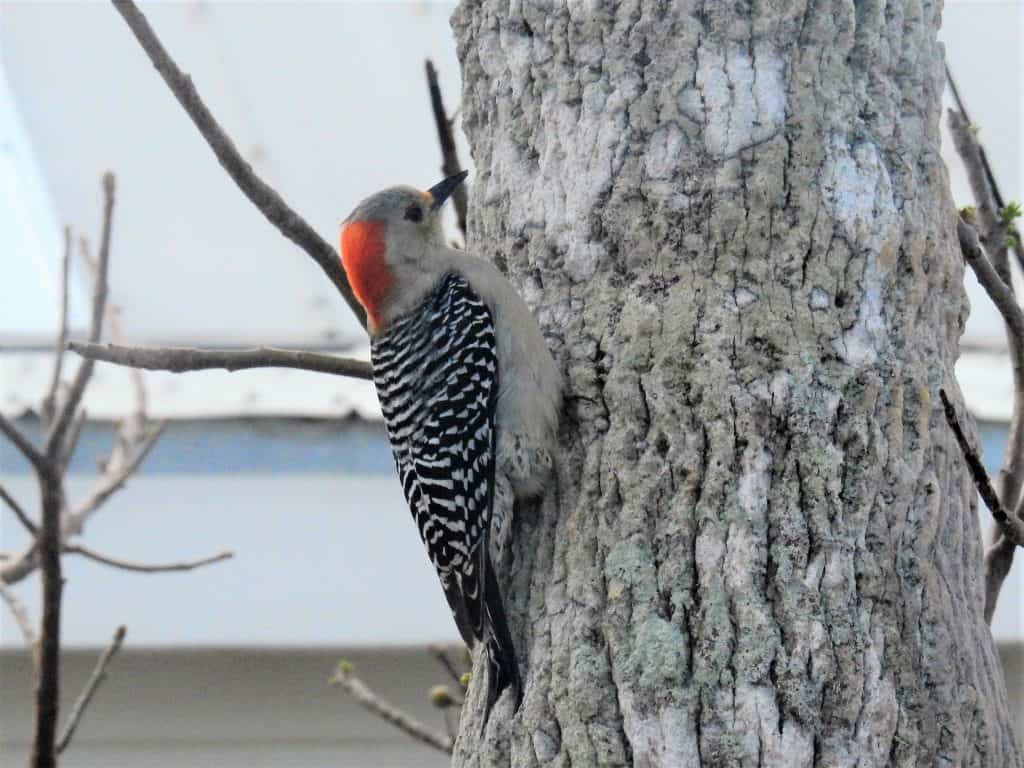
Only two miles south of the park lies Pelican Island National Wildlife Refuge, the nation’s oldest bird refuge. Due to its proximity to the state park, plenty of seabirds pass through Sebastian Inlet. https://www.fws.gov/refuge/Pelican_Island/about.html
Water Lovers Unite
Sebastian Inlet SP includes over 3-miles of beachfront property, giving park visitors plenty of room to roam. Bring your chair, spread out a blanket and relax listening to waves crashing on the shore. You’ll not find cars or crowds to encroach upon your day at the beach. Shell seekers will relish a walk on this beautiful beach.
Swimming: Sebastian Inlet’s ocean beachfront is open for swimming. There are no lifeguards stationed within the state park boundary, but warning signs are posted throughout the day indicating swimming conditions. Riptides occur often at Florida’s Atlantic beaches. Please keep that in mind when deciding how far out you’ll swim. Should you be caught in a riptide, swim parallel to the shore until you swim out of it – never fight it by attempting to swim straight in.
If getting bounced about by waves is not your thing or if traveling with small children, the “Cove” is located on the north side of Sebastian Inlet. This protected beach area of calm, ocean waters makes it ideal for those with small children or visitors who are not strong swimmers.
Surfing: You’ll most likely spot surfers, beachside, riding the waves in. Monster Hole, Sebastian’s one-of-a-kind destination for East Coast surfers, is not easy to get to nor is it always the perfect ride. Surfers must paddle 15 to 20 minutes through the ocean’s current to the sandbar .3-miles offshore. The take-off zone could shift depending on the tides, so you may find it not what you’d expected that day or, should the tide align properly, you’re in for quite a ride.
Sebastian’s other infamous wave, First Peak, was written up several years back in Surfer’s Magazine. Sadly, a jetty construction rehab, diminished First Peak’s power. The First Peak Project, formed by surfer aficionados, claims to have the knowledge and skills to bring this wave back to its originality. That could be great news for surfers visiting this stretch of beach.
A surfer’s webcam can be found at https://www.surfguru.com/sebastian-inlet-surf-report.
Snorkeling and Diving: Both are permitted within Sebastian Inlet SP anywhere except under the bridge and in the boat channel. Rocky reefs stretch for miles south of the inlet near the shoreline. A dive flag must be visible within 100 feet of this activity, and visibility is best during summer. Please note, spearfishing is prohibited.
Water Vessels: Kayaks, canoes and paddleboards are another form of transportation you’ll see at Sebastian Inlet. The Indian River Lagoon is the ideal place for these adventures. Launching is available at both launch sites. Bayside Marina does rent kayaks and canoes.
Paddling the lagoon provides calm waters, time to explore the mangrove shoreline, search for water-loving wildlife and seabirds as well as the ability to fish from your kayak or canoe. It’s a great day either fishing for dinner or perhaps spotting a manatee or dolphin as you paddle.
More Adventures Await on Land
When it’s time to be a landlubber, you’ll still find plenty to keep you busy — or not. It all depends on how you wish to spend an hour or a day. Where land meets sea, this park provides a wealth of recreational activities. The state has done a remarkable job offering visitors opportunities galore to enjoy this magnificent setting.
Camping: First and foremost, lodging at Sebastian Inlet SP will involve camping. There are no cabins, however, its 51-site campground provides breathtaking water views. Several sites sit directly across a small road from the lagoon but there doesn’t seem to be a bad site to be had. A short walk from your site at day’s end finds the brilliant sun slipping into the water while the sunset paints a colorful sky.
The campground, south of the inlet, has water and electric hookups; a fire ring, grill and picnic table. Restrooms, showers, laundry facilities and a dump station are on-site. Pets are allowed in the campground but not on beaches. There are a few sites that will house up to a 40 ft. RV, but check site details when reserving this campground (up to 11 months in advance) at ReserveAmerica.
Bicycling: Three “mountain” bike trails are located within the park. Since Florida is for flatlanders, the term “mountain” here refers to sandy and, at times, wet trails that challenge the bicyclist. Another multi-use paved path runs through the park parallel to SR A1A and, at times, the Indian River Lagoon. This path runs 40 miles and has several access points to the beach.
Hiking: A one-mile long nature trail is offered through a coastal, sub-tropical hammock where the edge of the water-loving mangroves can also be seen. Hikers can use the mountain bike trails as well.
Shops, Grub and Museums: There’s a gift shop attached to the BG’s Surfside Grill and Adventures Restaurant in the state park. You can grab a bite to eat while you look for that memorable souvenir or find camping items you might need.
An exhibit featuring sea turtles can be seen near BG’s Surfside Grill. The park has two museums; both worthy of a visit. You’ll begin to understand why this is called Florida’s Treasure Coast. The McLarty Treasure Museum, on the park’s south boundary, features artifacts, displays and a deck overlooking the ocean. A short interpretive film tells the story of a 1715 Spanish Fleet hit by a hurricane off the coast while returning to Spain. Salvagers even today continue to search the shoreline for gold, silver and jewels that were lost at sea.
The Fishing Museum, near the park entrance, is devoted to Sebastian’s fishing industry and three original families who operated fish houses here. Photo exhibits, old fishing boats, nets, gear and fishing poles galore all have a fishy story to tell.
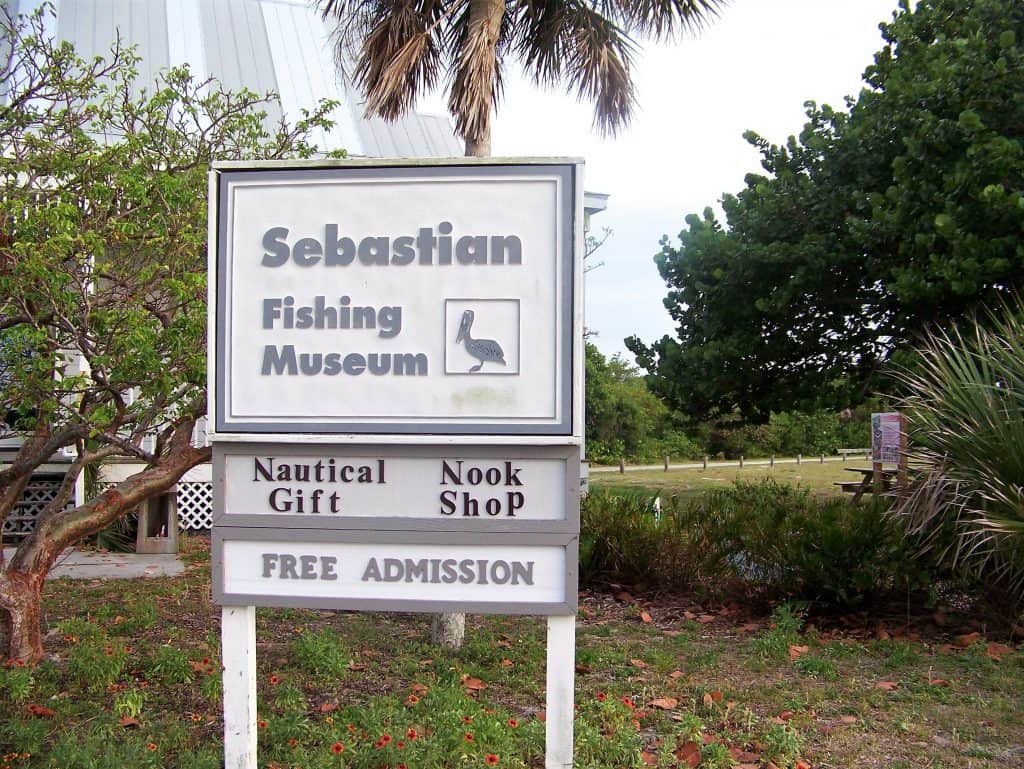
Entry to the McLarty Treasure Museum is $2/per person. The Fishing Museum is free. Both are open 7 days/week, 10 am to 4 pm.
Night Sounds Concert Series: Once a month, September through May, concerts are held on the Saturday closest to a full moon at 7 pm. Local musicians perform for 2 hours, while BG’s Surfside Grill sells water, soft drinks, snacks and burgers. Bring your lawn chair, relax, enjoy the music and a sunset over the inlet. Concerts are free with regular park admission and are held at the Coconut Point Pavilion on the south side of the Sebastian Inlet Bridge.
Turtle Watch: This annual Watch is led by a park ranger. Tickets ($10/per person) are purchased through http://www.fsispturtlewalk.org/. The program is offered 4 days/week but only during June and July when you may catch sight of a Loggerhead, Leatherback or Green sea turtle coming ashore to lay her eggs, cover and disguise her nest, only then to crawl back down the beach and disappear into the ocean. These nests are protected and roped off by the volunteers once mama turtle has returned to sea in hopes that many of these new hatchlings, two months later, will also find their way to the sea.
The program starts at 9 pm and could last as late as 1 am. Participants cannot use flashlights and may need to walk up to 3 miles on the beach. On average, a turtle is spotted 85% of the time on these watches. Conditions could be buggy so insect repellant is highly recommended.
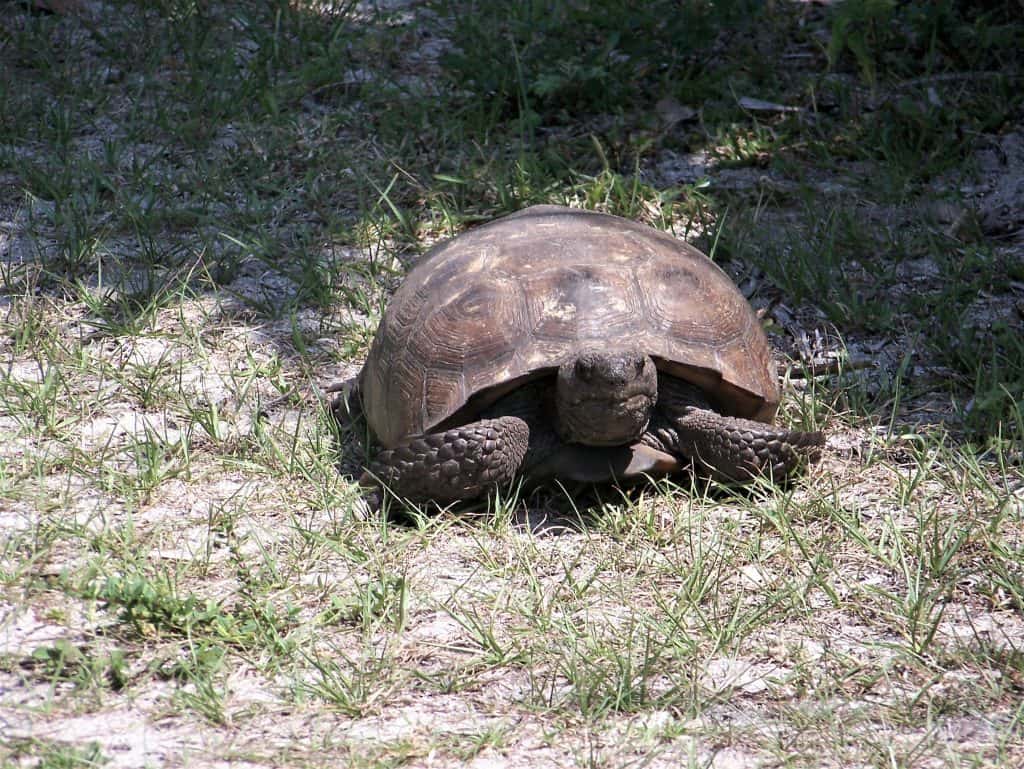
Weather
Florida is, well Florida. Snowbirds love our winters for good reason. Fisherman, boaters and many Floridians love the lifestyle any time of year!
If you are camping, be aware that no-see-ums and mosquitoes are most likely present during warm and hot months. Conditions can be lovely and breezy keeping many insects at bay however, summer days and nights can also find the air quite still. Bringing along a fan to plug in outside your campsite can help.
Check weather forecasts for possible lightening storms or unfavorable weather conditions. Cooler months will find you loving life on the inlet.
Wildlife
You’ll see marine life daily. Dolphins make their way in and out of the lagoon, gracefully swimming and rising to the surface in order to breathe through the blowhole located on top of their head.
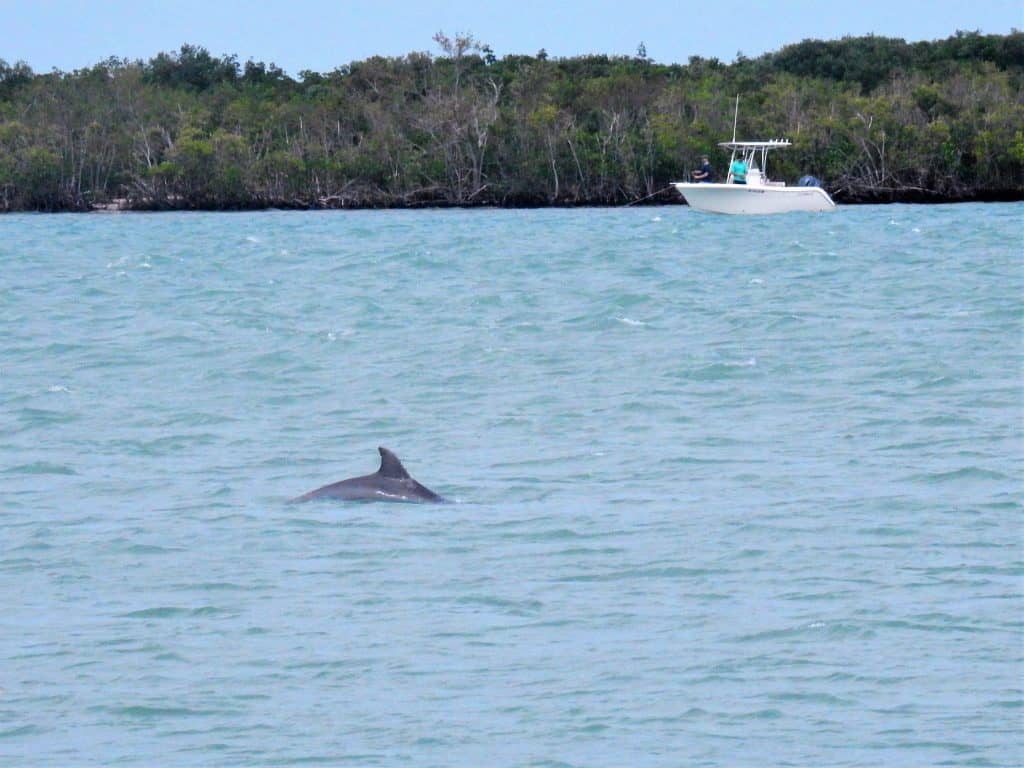
Loggerhead, Leatherback and Green sea turtles all travel hundreds of miles each summer to nest. Participating in the turtle watch program, brings you up close and personal to this timely ritual most will rarely experience.
Over 190 species of birds have been logged in by the state park. Be sure you come with binoculars and a camera to catch these fine, feathered creatures.
Manatees are seen often at Sebastian Inlet. Be it summer or winter, these mermaid-like mammals can be found on the ocean side of the north and south jetties or meandering through the lagoon where many kayakers have been fortunate to come upon them.
While kayaking the Indian River Lagoon with friends a few years back, we startled some lumbering manatees who provided us quite a show. A huge wall of water rose up several yards in front of us which stopped us dead in our tracks wondering what creature lied beneath the lagoon waters. When we composed ourselves, we paddled out in the direction of the wake to find two large manatees, now quite content, who allowed us to observe them for a bit. It was one of those National Geographic moments.
Raccoons, opossums, gopher tortoises, the rare southern beach mouse and other small animals can routinely be spotted.
Conclusion
Not all Florida beaches are created equal. The opportunity to visit Sebastian Inlet, be it for a day or more, will open your soul to this peaceful world along Florida’s Atlantic Treasure Coast. Appreciate and respect the abundance of nature that lies before you, and you’ll find there is no wrong way to enjoy this coastal paradise.
